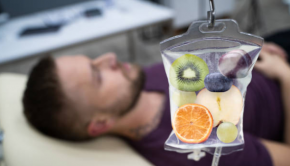A Novel Approach to Headaches
Headaches can be very difficult to treat. A common approach is to use medications to relieve the symptoms.. When the underlying contributors to headaches are addressed, they often improve, and if the causes can be eliminated, the headaches improve on a long-term basis for lasting relief.
One area that needs to be assessed in anyone with persisting headaches is the neck, or cervical spine. Commonly, the head and neck conspire together to cause headaches. This connection can be through nerves and muscles, or even the joints of the cervical spine.
When the neck muscles are tight and tender, they tend to contract, and can sometimes go into spasm. We can visualize that the neck muscles are connected to the scalp muscles, so as the neck muscles contract, they pull on them, which can lead to tension headaches. If we can get the neck muscles to relax, the scalp muscles may loosen up, resulting in release of the tension headache.
The nerve supply to the scalp and face has connections with the cervical spine, so if a nerve is irritated in the neck, it can send a pain signal to the head. The nerves come off the spinal cord and go through a narrow space called the spinal canal, exiting through a small canal called the foramen. When there is arthritis in the spine, bone spurs grow into the foramen, narrowing the space around the nerve further. Also, the disc, which is a cushioning material between the spine bones (vertebra), can also push out and pinch the nerve while it is in the spinal canal. Whether pinched by a bone spur or disc, the nerve may send a signal to the scalp and/or face, which can cause a headache. By treating the pinched nerve, the headache will improve. A nerve can also be compressed if a muscle contracts around a nerve. In that case, working at relaxing the muscle can release the nerve, which will also resolve the headache.
The joints of the neck are called the facet joints., which have a characteristic referral pattern at each level. This means that when a joint at a particular level in the neck is dysfunctional, that joint will refer pain to a predictable area in the neck, upper back or head. Several joint levels refer pain to the head which results in headache. By treating the dysfunctional facet joints, the headaches will improve.
A treatment that can address all these aspects of neck pain is prolotherapy, the use of a dextrose solution around ligaments and tendons that creates a mild irritation of the tendon or ligament. This leads to increased blood flow with healing factors which help strengthen the ligaments. That is important because the ligaments and tendons do not get a lot of blood flow otherwise and do not heal well. When the neck ligaments are strengthened, neck pain will improve. When the ligaments are loose, the muscles tighten up to stabilize the neck, which can lead to headaches. By strengthening the ligaments, the neck muscles can relax and that releases the scalp tension. Pinched nerves in the neck can also improve with prolotherapy because strengthening the ligaments improves the stability of the cervical spine. This makes the disc or bone spur less likely to irritate or pinch the nerve. This improves headaches which are caused by a nerve that is irritated in the neck. Facet joints are also surrounded by ligaments. By strengthening them, the dysfunction in the facet joints is improved, so the associated headache also improves. Thus, prolotherapy improves the headaches caused by neck abnormalities.
Another excellent treatment for headaches is neural therapy. Many headaches are caused by nerve imbalances. The autonomic nervous system functions best when in a state of balance between the sympathetic nerves (stress system) and parasympathetic nerves (relaxation system). Today, many people are in sympathetic overdrive. Neural therapy uses procaine to modulate the autonomic nerves and restore nerve balance. Some of the targets that improve headaches include the scalp muscles, the ganglia (nerves) in the head and neck or other structures such as the sinuses, tonsils and scars in the head and neck area.
Nerve cells cluster in the ganglia, so they have a wide range of influence along the area they supply. Two common ganglia that are targeted for headaches include the stellate ganglion in the neck, which has a wide range of influence in the neck, head and even the arms; and the sphenopalatine ganglion in the skull, which is often involved in headaches. By blocking either or both of these ganglia, headaches may lessen in intensity or even resolve.
Sinus headaches respond very well to neural therapy. They result from congestion and poor drainage. As the sinus fluid backs up, it becomes stagnant—an ideal environment for bacteria to thrive. A good metaphor is a swamp that becomes clouded with algae and bacteria. Compare this to a clean river that is flowing well with refreshing water. With procaine in the sinuses and tonsils, the autonomic nerves are balanced, enabling the sinuses to drain. This is complemented and enhanced by clearing the sinuses out further with the vapors of ozonated olive oil. By clearing the sinuses, the sinus headache resolves.
Another source of headache is abnormalities in the temporomandibular joint (TMJ), which responds very well to prolotherapy. The TMJ is a small joint that is prone to instability, and the muscles in the area tighten up to compensate for its looseness. Prolotherapy strengthens the joint capsule, which comprises small ligaments around the TMJ. The prolotherapy solution is applied to the joint capsule and to the small muscle tendons in the area of the TMJ. When successfully treated, the headaches caused by the TMJ will resolve.
Multiple structures may be contributing to headaches, and a prominent cause is the neck, which can usually be treated successfully with prolotherapy. Nerves in the neck and skull may be irritated or out of balance, so by addressing these nerve issues, headaches will often improve or resolve. By treating sinus congestion with neural therapy, headaches will also be relieved successfully. A commonsense approach to treating headaches is to look for what structures might be causing the headache and then treat those structures. Rather than taking medications that mask the headache symptoms, this approach treats the causes of headaches and leads to long-term resolution.
Warren Slaten, M.D., is a pain wellness physician in Ridgewood. For appointments and more information, call 201-882-1500 or visit njprolo.com.





























